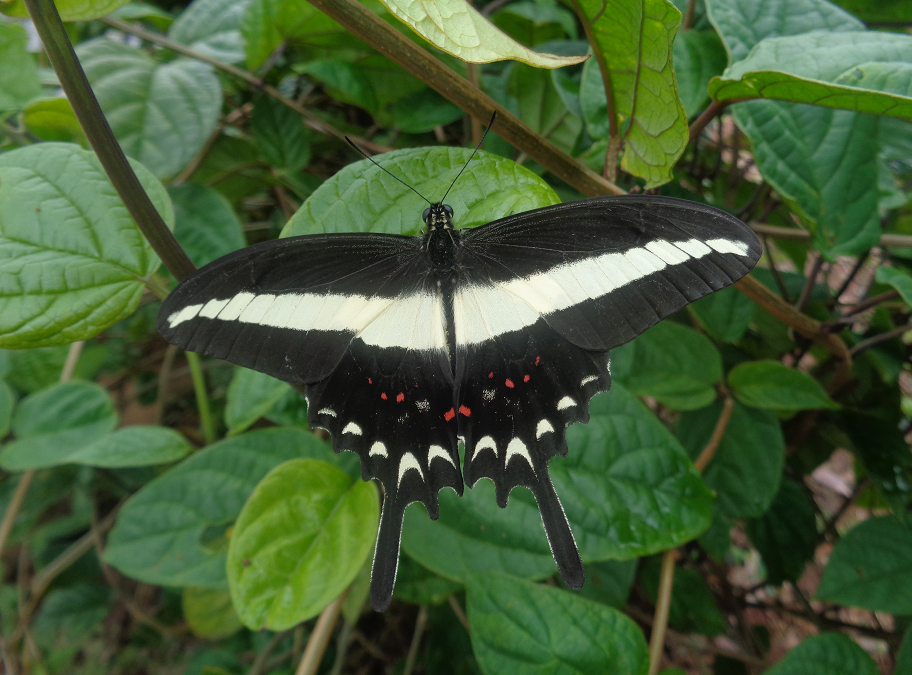All across Paraguay brilliantly coloured butterflies fly. A day never passes without a few crossing my path. In their many sizes and colours they are a common sight all across the land.
Perhaps surprisingly considering their obvious attractions the diversity of butterflies in Paraguay is poorly studied. It is well know that they fill every available environment but even exactly how many there are remains unknown. The estimated number of species is put at 1500 but the true number may well be higher.
Each species has its own environment or number of environments in which it thrives. Some like thick woodlands while others prefer open grasslands. Some inhabit deserts whilst others require marshlands.
All though are brightly coloured. Blue, red, orange, yellow and black are just a few of the colours in which they shine. Often their wings are patterned with delicate designs. Sometimes though the wings consist of a solid block of colour. Those with iridescent wings glisten when caught by the suns rays.
The sizes of the butterflies vary as much as the colours. Some are tiny with wings no larger than small coins. Others though fly with wings the size of a human hand. Between these two extremes every possible size of butterfly, with ever possible colouration can be found.
One of the most commonly seen butterflies in Paraguay is the Southern Monarch. This is very similar in appearance to the monarch butterflies of North America and Europe. It is however separated physically from its northern relative by the Amazon and the Equatorial regions. Although its habits are not as well known as those of the Northern Monarch is know also to migrate.
A family of butterflies more restricted to the tropical regions of South America is those of the genus Morpho. There are numerous Morpho butterflies to be found all across Paraguay. One of the most visible is the Blue or Emperor Morpho. This large butterfly which can grow as large as 20cm across has brilliant blue wings trimmed with black.
Another common family of butterfly is the Swallow Tails. These again are to be found in a host of colours and sizes. One of the most distinctive is Parides Proneus. This large swallow tail butterfly has black wings with a distinctive central white band. When in bloom one of the flowering plants in the garden is favorite food from which a swallow tail will spend considerable time extracting nectar.
These butterflies, the Monarchs, the Morphos and the Swallow Tails are all strong flyers. They fly purposefully through the air. They are not driven by the wind but rather choose their own path from plant to plant. Some are capable of flying with considerable speed and over distances.
Smaller than these are a great multitude of other butterflies. Many of these are weaker fliers and so often only seen when the air is calm. They are though more more numerous. Gathering in large numbers on patches of damp ground. Often sandy river banks. Then rising in great clouds of blue or yellow when disturbed.
Even at home I see different species in the garden, across the grasslands and in the woods. All parts though appear to have healthy and varied populations of butterflies. And as long as the countryside remains just that there is no reason for that not to continue.


Beautiful butterflies